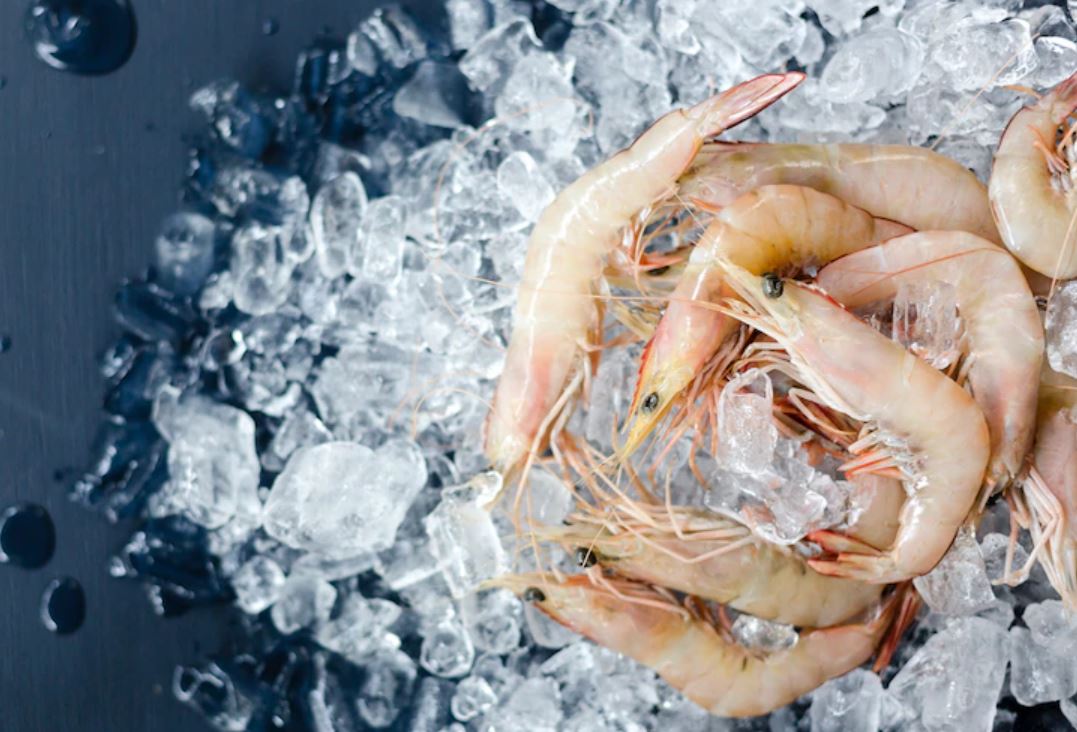ABC Coverage: Water allocation licenses, rise of agriculture poses widening threat to Christmas prawns from the north
By Roxanne Fitzgerald (ABC) | Friday 24 December 2021
Days out from Christmas, an unassuming, corner-block building on Darwin’s harbour is bustling inside.
“[It’s] crazy. It hasn’t stopped at all,” Laura Luchetti said.
Every year, a stampede of customers stocking up on a Christmas staple has Laura rushed off her feet.
Prawns of all types have been “flying out the door” of the local seafood shop, making up almost half of the business’s sales at this time of year.
But advocates say affordable wild-caught prawns could soon be off the festive table, with species in the north facing a growing threat from industries looking to extract massive amounts of water from rivers.
Every year, about 8,000 tonnes of wild prawns are caught from a fishery in the north spanning nearly a million square kilometres from Cape York to Cape Londonderry, the northernmost point of mainland Western Australia.
The crustaceans are shipped all over the world, but here in Australia nearly 80 per cent of the catch is eaten across the Christmas period.
“The real joy is what a wild prawn can mean for a Christmas feast. It’s just such a classically iconic Australian thing to do,” said David Carter, chief executive of commercial fishing company Austral Fisheries.

But he said increased agriculture development was posing a widening threat to the future of Christmas prawns due to the NT government’s water allocation policy plans and the expansion of irrigated agriculture in the Northern Territory.
He named the “impact of increased agricultural use of water, excess use of agricultural chemicals and cotton” as some of the biggest threats.
“We run across a big geographical area, but each one of these potentially adds to a death by 1000 cuts.”
‘A threat to our livelihood’
When Cyclone Tracy hit Darwin on Christmas Eve 1974, demolishing 80 per cent of building structures and taking more than 70 lives, it also dropped buckets of rain.
That year led to the northern fishery’s largest-ever haul of banana prawns. Fourteen thousand tonnes were caught, and nothing has beaten it to this day.
“The underpinning of our successful fishery over 40 years has been the environmental flows that sustain the baby prawn,” Mr Carter said.
The prawn’s life cycle is intrinsically linked with the wet and dry that characterises the Top End, and a good year hinges on full rivers and big downpours that flush baby prawns into the ocean.
Larvae is spawned at sea before embarking on a massive journey into rivers, where they await the wet season’s monsoonal rains.
“So, if agricultural industries are allowed to take a lot of water from those river systems it does pose a threat to our livelihood,” he said.
“Whether it’s irrigated pasture for cattle, or more intensive cropping operations like cotton, it all begins to interfere with the natural flow of those coastal and estuarine systems that are so important to us.”

Water policy puts pressure on long-standing industry
The Northern Territory government is consulting on possible changes to its longstanding 80:20 water rule, which determines how much of the resource must be allocated to the environment and how much can be used for drinking and by industries.
On its election in 2016, the Gunner government promised to improve the management of water licensing, but the rule has since been at the centre of controversy.
Mr Carter warned against policymakers going for “the next shiny thing” in terms of industry development “only to forget about legacy industries” like his, which he said have supplied both local and export markets and provided extensive regional economic activity for decades.
“As we keep impacting adversely on different parts of the fishery, amid climate change … then that absolutely increases the economic pressures on this long-standing industry.”
In April, the Northern Prawn Fishery Industry voiced its concerns to a Senate Committee.
Chief executive Annie Jarrett said water extraction “may reduce flow volumes, consequentially reducing crustacean and fish populations”.
“Sequential years of reduced flows due to water diversion for irrigation may increase the frequency of low-level flow years and hence increase the years of uneconomic catches to a level where the long-term economic viability of the NPF banana prawn fishery is compromised,” she said.

Mitch Hart, the NT manager for the Pew Charitable Trusts, said the community and businesses that rely on healthy rivers “have made it clear that they are concerned”.
“We must ensure that our water management system is up to the task. Any environmental policy is only as effective as the regulatory regime within which it operates. There are serious structural deficiencies within the Northern Territory’s water regulatory regime,” he said.
A Northern Territory government spokeswoman said prawns were “not at risk”.
“The Territory government is developing a long-term, comprehensive strategic water plan to ensure the sustainable management of our water resources, and that water is available for drinking, growing and making valuable products,” she said.
